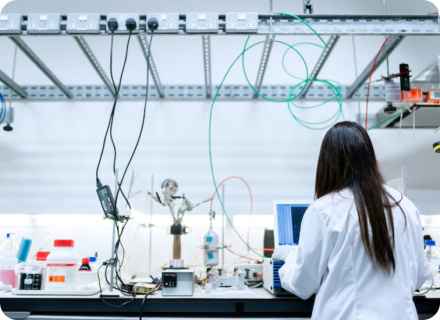FAQ on Common Misinformation
Inquiries, information, and suggestions: info@worldhealthnetwork.global
Can I still get COVID-19 if I am vaccinated?
Do vaccines prevent transmission?
MASKS AND RESPIRATORY PROTECTION
I am vaccinated – why do I still need to wear a mask?
What is the problem with mask quality?
Does an N-95 always require fit testing to be effective?
How long can I wear my mask or respirator for?
I already had COVID-19, can I get it again?
Will variants become more or less severe?
Does vaccination prevent new variants?
How long will cases take to come down?
How much can I trust that statistics like cases, hospitalizations, and deaths are accurate?
Vaccines
Can I still get COVID-19 if I am vaccinated?
Yes. Current vaccines provide limited protection against infection from current variants.
Once infected, the vaccines reduce the likelihood that someone develops severe symptoms that require hospitalization, intensive care, and dies. This protection is strongest soon after vaccination and for the original and first few variants. The protection decreases over time (waning), and is weaker for Delta and Omicron (decreases further as variants diverge genetically from the original).
Do vaccines prevent transmission?
No. While vaccination may reduce the likelihood of transmission, a vaccinated person can become infected and infect others.
The vaccines cannot prevent someone from inhaling the virus from somebody else, and do not prevent infection inside the lungs.
Why do I need a booster?
The effect of vaccination decreases over time, especially against newer variants. The “boosters” – additional doses of the vaccine – restore short term protection and provide additional long term benefits.
Vaccine effectiveness wanes over time for all vaccines (Pfizer/Moderna/AstraZeneca given in 2 doses, or Johnson & Johnson given in one dose). Also the effectiveness of the vaccines is lower against Delta and almost completely undermined against Omicron. An additional dose (third or fourth) has been shown to restore vaccine effectiveness against Delta. Effectiveness against Omicron is increased by a booster, but remains lower than against previous variants. The restored effectiveness is better against severe disease and death, but remains limited against infection, transmission and hospitalization.
Masks and Respiratory Protection
I am vaccinated, so why do I still need to wear a mask?
Vaccination does not provide adequate protection against transmission for current variants. The protection offered by masking works together with vaccination to reduce the likelihood of transmission and may also reduce the severity of breakthrough infections.
Masks reduce the chance of getting infected by preventing the virus from being inhaled and by reducing the quantity of inhaled virus. Vaccination doesn’t protect completely against getting infected, especially if the exposure to the virus is high, and it does not guarantee that you will not infect others, but it provides substantial protection from severe disease and death.
Can anyone wear an N95?
Yes. N95, FFP3, KF94, FFP2, or KN95 masks (respirators) can be used by anyone 2 years old and older.
People who find a specific model does not fit well may try different makes and models for an improved fit. If someone has significant problems breathing with these masks, they should ask a doctor to check if they have a respiratory issue.
What is the problem with mask quality?
Unfortunately, fraud is widespread and mask quality varies considerably so use a reliable source for masks, e.g. ProjectN95.org See https://whn.global/guidelines/index.php/Masks
The problem is that the increased demand for more effective masks motivated more manufacturers and distributors to enter the market. Some of these masks are not of the same quality, which reduces their effectiveness. Using a reliable source for high quality masks reduces the likelihood of coming across this problem. Click here for a comprehensive guide to selecting, purchasing, wearing and caring for masks [1].
Does an N95 always require fit testing to be effective?
No. While fit testing gives a higher level of protection, individuals wearing non-fit-tested high-quality masks still have strong protection against infection compared to surgical masks [1]. See https://whn.global/guidelines/index.php/Masks
[1] Bagheri G, Thiede B, Hejazi B, Schlenczek O, Bodenschatz E. An upper bound on one-to-one exposure to infectious human respiratory particles. PNAS [Internet]. 2021 Dec 7 [cited 2022 Jan 17];118(49). Available from: https://www.pnas.org/content/118/49/e2110117118
How long can I wear my mask or respirator for?
Masks and respirators can be worn for many hours, and re-used until damaged, soiled, or damp. A disposable N95 is likely to be effective for approximately 40 hours.
You can wear a mask or respirator for many hours at a time. If you are in a job or situation where you wear one for long periods every day, use a set of breathable paper bags labeled with the days of the week, and put your mask or respirator into that day’s paper bag. Current experience indicates it can be reused after a minimum of 5 days. A disposable N95 can be effective for up to about 40 hours of use.
Testing
When should I test?*
Testing is encouraged when a person either has symptoms, reasons to suspect exposure, or is going to an event where exposing others is possible. More generally, surveillance or mass testing can be used to reduce transmission in the community by identifying cases.
*According to the guidelines of the WHN: guidelines.whn.global
People should:
- Test to see if you are infected if you have symptoms (early COVID-19 symptoms are not distinct from other viral infections), or if you are exposed to others who you learn were or might be infected, or if you engage in an activity that has a high likelihood of infection (like travel or going to an event or gathering) so you can prevent others from being infected. Isolate while waiting for test results. See “Negative test?” and “Positive test?” below for what to do when you receive results.
- Test before leaving isolation if you have been sick with COVID-19. You should not return to work or be around others if you are still testing positive.
Which tests? PCR or LAMP tests are most sensitive, but if they are not available, a series of two home rapid antigen tests taken 12-24 hours apart helps to determine if you are infected and contagious. While a single rapid antigen test will help determine infectiousness, using a confirmatory antigen test reduces the likelihood of a false negative result. For the Omicron variant, combined throat and nasal swabs are more accurate than nasal swabs alone.
Negative test? Negative results should not be considered definitive—it is possible to test negative multiple times and still be contagious, because of “false negative” results and because it is possible to test negative shortly before becoming contagious, and then become positive. So if you still have symptoms or there are other reasons to believe you are very likely to be infected, get a second or even third negative test before leaving quarantine.
Positive test? Follow isolation guidelines until you satisfy the guidelines for leaving it, including one or more exit tests returning negative. At the end of an isolation due to infection, it is possible for PCR tests to continue to return positive results due to non-viable virus, even weeks later, although there are also cases of extended infectiousness. Seek medical advice to determine if you are still infectious before leaving isolation.
Isolation Guidelines (abbreviated)
You should isolate (preferably in a space by yourself) and avoid contact and sharing air with others, including family or housemates, until you exit isolation after two negative tests 24 hours apart. Omicron is currently dominant, and, the evidence suggests its average duration of infectiousness is approximately ten days, so if testing is not available to exit isolation, a 14-day isolation period is appropriate. If contact is completely unavoidable, wear a tightly-fitted, high-filtering mask or respirator around others and advise them to do the same, and ensure optimal ventilation.
Precautions
Am I safe from COVID-19 as long as I socially distance 6′ / 2 m or other standard (e.g., 1 m or 1.5 m)?
No. Social/physical distancing helps because the virus is more concentrated in the air around infected people. But as they breathe out aerosols containing the virus, the amount of virus in indoor air builds up. The aerosols float and linger in the air like smoke throughout the space for hours, spreading throughout indoor spaces.
Virus laden particles in the air (aerosols) spread around in an indoor space and can remain airborne and viable for hours, unless the space is well ventilated. Social distancing can help in the very short term, because the virus is most concentrated in the air around an infected person. However, after a short time the virus spreads throughout the space. It is necessary to use multiple forms of protection, including high-quality masks, diagnostic or screening testing, ventilation and filtration, vaccination and boosters, and other measures in a layered approach.
Pathology
I already had COVID-19, can I get it again?
Yes. Reinfections are common. While prior infection provides some protection from reinfection, you can get re-infected, especially by a different variant.
This is especially true with Omicron, i.e., after being infected by Delta, you can get infected by Omicron, and after being infected by Omicron BA.1 you can get infected by Omicron BA.2. Successive infections can lead to accumulated physical harm.
[1] 5X increase in reinfection rates https://www.imperial.ac.uk/mrc-global-infectious-disease-analysis/covid-19/report-49-omicron/ [2] Neutralizing immunity in vaccine breakthrough infections from the SARS-CoV-2 Omicron and Delta variants: https://www.medrxiv.org/content/10.1101/2022.01.25.22269794v1.full.pdf
Is COVID-19 mild?
No. COVID-19 is a highly transmissible, potentially disabling or fatal virus. Its effects on individuals as well as on society are much more severe than the flu.
Each individual has a chance of having either a mild or severe case when they get infected. The chance of having a severe case varies with age, prior health conditions, vaccination status, and variant. For example, children under 4 years of age are much more likely to be hospitalized with a severe case of infection by Omicron than infections by previous variants. It is difficult to know if an individual will just have mild symptoms or if it will get worse with time [1]. There are many cases of young, healthy individuals that have been severe and even led to death, including over 1,334 childhood deaths in the US alone.
The commonly used medical definition of mild—that it does not lead to hospitalization or death during the initial phase of the infection—does not correspond with what most people would consider mild as it can include high fever, physical pain, difficulty breathing, nausea, vomiting, or diarrhea, and does not include the effects of long COVID which can be debilitating and can lead to death[2]. The likelihood of having a moderate or severe case that requires hospitalization and may lead to death depends on some known and many unknown factors, including having comorbidities such as asthma, high blood pressure, diabetes, liver disease, cancer, kidney disease. These conditions are widely present in the population with 40% of the population having at least one and 25% having two or more conditions [3]. Individuals over 50 and progressively at higher ages are also more likely to have severe disease. It is important to emphasize that even asymptomatic and mild infections can lead to long COVID.
[1] https://www.medrxiv.org/content/10.1101/2021.12.21.21268108v1
[2] https://www.nature.com/articles/s41586-021-03553-9
[3] https://www.thelancet.com/journals/lancet/article/PIIS0140-6736(12)60240-2/fulltext
Variants
Will new variants emerge?
As long as widespread transmission of COVID-19 continues, more variants will emerge.
Each time the variant replicates, there is some possibility of mutation. Because of the scope of the spread of the virus, mutations do continue to occur. These mutations may be insignificant, but they can also either reduce or increase the spread of the virus. In order for a variant to take over, it has to be more fit than the dominant variant, either by being inherently more infectious or by being better at evading immunity against infection and replication.
Will variants become more or less severe?
Variants do not become automatically less severe, especially because transmission occurs long before the disease becomes severe or people die. New variants which take over will be more transmissible, which makes them more severe for public health. And variants generally will become more severe if it improves the rate of transmission.
The idea that variants become less severe was debunked by Anderson and May in 1982 [1]. For COVID, since deaths occur after transmission, there is no disadvantage to the virus from killing its hosts – because it has already spread. A variant becomes dominant by its ability to more rapidly infect others. On an individual level, new variants may be more, or less, severe than the prior dominant strain, but on a public health level, a variant that is more transmissible will be more harmful.
Alternatively, some people are hopeful that due to immunity gained from vaccination and infection the virus will be less severe. The rapid evolution of new variants, the possibility of multiple infections due to limited cross immunity, and vaccine evasion make this highly unlikely. Finally, some think that the death of those who are vulnerable, the population will become less susceptible to disease. This involves the maximum loss of life due to the disease. Moreover, the ongoing rounds of infection and the long COVID disability it causes, even in healthy young individuals, indicate that these infections will lead to new populations with medical conditions that were previously without them who are vulnerable.
[1] RM Anderson, RM May, Coevolution of hosts and parasites, Parasitology 85.2,411-426(1982).
[2] E Fell, C Yates, Will coronavirus really evolve to become less deadly? The conversation, https://theconversation.com/will-coronavirus-really-evolve-to-become-less-deadly-153817
Does vaccination prevent new variants?
No. New variants occur when there is a large amount of transmission, which enables mutations every time a new viral particle is formed. Since current vaccines don’t prevent transmission, they do not prevent new variants from forming.
Vaccination prevents the emergence of variants only when they are either highly effective against transmission (AKA “sterilizing vaccines”), or more generally when used in combination with a comprehensive set of non-pharmaceutical interventions (NPIs) such as high-quality masking and robust ventilation and filtration of indoor air.
When new variants are formed, the ones that are more transmissible and can evade vaccines spread more rapidly. For example, Omicron, which is more vaccine evading, grows more rapidly because it can infect vaccinated people more readily than Delta.
Understanding Pandemics
How long will cases take to come down?
It is not possible to generally estimate a timeline for cases to come down. However, society has the ability to reduce cases through collective action.
The decrease in cases depends on several factors, including non-pharmaceutical interventions (NPIs) in place, transmissibility of a particular variant, vaccine prevalence in a particular area, and prior infection rates. It is therefore not possible to give an estimate of the timeline for cases to come down. When preventive actions are relaxed when cases are going down, the time for cases to go down increases and cases may go back up again.
Will COVID-19 become endemic?
The term “endemic” is widely misunderstood and misused. The term has recently been used to suggest elimination of COVID-19 is impossible, and that at some time in the near future, the disease will become very mild, like the common cold. A more accurate definition of endemicity means that a disease or organism is regularly found in a geographical area. It does not mean that it has become mild, has stopped mutation, that it can’t be eliminated, or cannot disrupt society. COVID-19 will become endemic if we fail to control it, and we should avoid this outcome.
What is elimination?
Elimination is the reduction to zero of the incidence of a specific disease or infection in an area over a period of time. Elimination does not mean eradication, which refers to global elimination. Elimination requires ongoing vigilance and some measures to prevent renewed transmission. Many diseases have been eliminated in large parts of the world including yellow fever, malaria, measles, mumps, rubella, polio, diphtheria, and smallpox.
What is eradication?
Eradication is the permanent worldwide reduction to zero of infection caused by a specific disease as the result of deliberate efforts so that measures are no longer needed. For example, smallpox has been eradicated. Many diseases caused by zoonotic outbreaks have also been eradicated.
How much can I trust that statistics like cases, hospitalizations, and deaths are accurate?
Accuracy of public health statistics varies by country or region, depending on health system capabilities, capacity, and transparency.
Reporting accuracy varies widely depending on the country that you are in. In some countries the governments are more transparent, while other countries prefer to not show all the cases and deaths or to delay data reporting, especially before elections or tourist seasons. Other places lack adequate public health reporting systems due to technology or resources. While delayed reporting during a crisis can be expected, specific places use policies that lead to under reporting.
For example, in Florida, throughout much of the pandemic individuals have been misclassified [1]. Deaths of individuals who were not residents were not reported even if they were in Florida when infected [2]. Shifting to a different date of reporting cases, can also lead to misrepresentation of the current conditions [3]. A variety of other methods of inadequate reporting have been described [4].
In the US currently, at-home testing is greatly underreported with essentially no effort by authorities to gather that information. There is also an effort in some states to distinguish hospitalizations by labeling them with other causes, a policy that might be valid in a few cases, but can be expanded to many more without justification and without possibility of validation. Furthermore, the case numbers are an underestimate because not everyone who has COVID-19 gets tested, although this is less likely to affect hospitalization and deaths data because of widespread testing among hospitalized cases (unless the healthcare system collapses and people die at home—as occurred in Lombardy in March 2020, in Mexico City in January 2021, and in many other places at particular times). Out of hospital deaths in nursing homes and other care facilities were widely underreported early in the pandemic.
[2] http://www.floridahealth.gov/newsroom/2020/05/052020-1607-covid19.pr.html
[3] https://www.wmnf.org/floridas-new-covid-reporting-methods-leads-to-misinformation-on-deaths-lawsuit/


